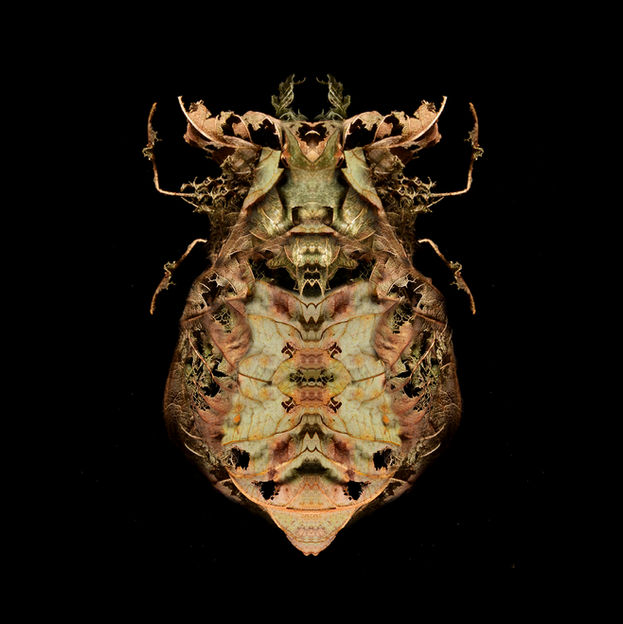Jose Snook
The Anthropocene exhibition explores Climate Change and Marine Plastic Pollution by looking at organisms that are vital to the Earth’s ecosystems, but are generally overlooked in news articles and documentaries.
The exhibition includes work from 3 projects: Mimesis, Unnatural Selection and Atlantic Drift
Whilst creating work for Anthropocene I experienced a range of conflicting thoughts. In making images that look at evolution and adaptation, it may appear that I am optimistic about the future of the ecosystems of this planet. But the work is science-fiction: I am painfully aware that whilst I can create an insect or a plankter in a matter of days, the reality is that these organisms and ecosystems have taken millions of years to evolve. More chilling is the understanding that it only takes a few vital species to become threatened for a whole ecosystem to collapse.
Mimesis
“Mimesis’ first began when I became fascinated by cryptic camouflage in insects and the phenotypic plasticity of many invertebrate species. In addition, I had long been concerned about the impact of humans upon non-human animals: whether it be through carbon emissions, air and plastic pollution, destruction of habitat, or the use of pesticides and herbicides.
I became inspired by the work of science artist, Cornelia Hesse-Honegger, who made field studies of mutations in invertebrates occurring in the Chernobyl nuclear fall out zone. With all this in mind I decided to make photographic works about mutation and evolution, and began some initial explorations in 2013.
Various studies of the Peppered Moth bolstered my intent to explore how adaptation may be driven by anthropogenic impacts upon ecosystems . The Peppered Moth has different forms: one is light in colour and the other dark. In polluted cities the dark variant became dominant as it was better camouflaged on trees that were stripped of lichen and darkened with soot. Once air pollution was reduced the pale variant again became dominant.
In 2018, my home county of Northumberland, UK, had one of the hottest and driest summers on record. Local flora was severely impacted. Trees suffered, in particular Sycamore and Cherry, with leaves withering on branches and eventually falling by July. This motivated me to revisit the "Mimesis' project, imagining how insects might respond to changes in the plants that formed their habitats and how they may camouflage themselves in this changing environment. I began to make series of “leaf insects” from photographs of decaying leaves or bark from rotten branches, from which new species may mutate and evolve.
Unnatural Selection
Unnatural Selection responds to marine plastic pollution: in particular micro-plastics and their impact upon the whole ecosystem, starting with plankton. I wanted to look at how the invasion of plastic might affect the smallest organisms that inhabit the oceans. In this work I’m imagining the sea becoming populated by plastic-plankton hybrids in world when only those organisms that evolve to assimilate plastics will survive.
I have been documenting, photographing and collecting the plastic washed up on a small beach on the Isle of Mull for over 10 years. With each year this became an increasingly desolate task. As I looked back over the photographs the plastic objects seemed to resemble organic forms: the remains of fishing nets appearing as alien plants or tubeworms emerging from the sand , whilst plastic bags and bottles formed a myriad of translucent jellyfish washed up on the shore.
These observations gave rise to experimentations in which I used photographs of the plastic I had collected to create zoo-plankton and phyto-plankton.
Atlantic Drift
Installation views -Bailiffgate Museum and Gallery
To see a video click here











































